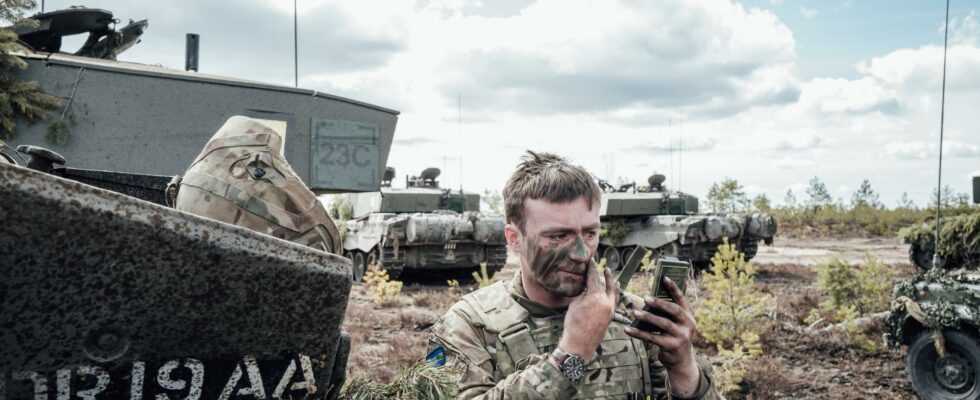InvestigationDeprived of its traditional enemies at the end of the Cold War, torn between Atlantic allegiance and European defence, NATO has regained its initial raison d’être and its unity since the invasion of Ukraine by Russia.
Wavering under the battering of a Donald Trump who, barely elected President of the United States, in 2017, had decreed it ” obsolete “diagnosed in ” brain death “ two years later by Emmanuel Macron, eaten away by internal divisions and repeated sprains by the turbulent Turkish member, weakened by the glaring lack of consultation between allies, the North Atlantic Treaty Organization (NATO) suffered so many crises that she often seemed in agony.
Despite himself, Vladimir Putin brutally revived it, bringing it back to its primary mission: to counter the Russian threat since the invasion of Ukraine on February 24. Illustration of this renewed force of attraction, Finland and Sweden are about to formalize their application for membership. The principle of neutrality, however anchored in the history of these two countries, was swept away by the violence of the aggression of Moscow, in which many had refused to believe until the last moment. The prospect of collective protection, guaranteed by Article 5 of the North Atlantic Treaty – an attack on one member is considered an attack directed against all – overcame the strong reluctance expressed until then in part of Finnish and Swedish public opinion.
While each enlargement of NATO has been perceived and denounced by the Kremlin as so many proofs of hostility towards it, the announcement of these possible memberships immediately made Moscow react, which notably threatened to reinforce its nuclear arsenal by Baltic sea. With the entry of Finland into the ranks of the Alliance, Russia will have to face a new member, endowed with a strong capacity for military mobilization and with which it shares a land border 1,340 kilometers long.
Volatilized enemies
While NATO had been designed at the start of the Cold War to protect the West from possible aggression from the East, its main raison d’être had disappeared in 1991, at the same time as the European Union Soviet. And its traditional enemies had evaporated with the dissolution of the Warsaw Pact. Seventy-three years after its creation, on April 4, 1949, in Washington, it has regained its colors, reinvigorated by a unity that it has long lacked and a legitimacy that no one in the Western camp disputes – for the moment. .
Asked at regular intervals for more than thirty years, the question of NATO’s survival or “revival” is today eclipsed by what Andrew A. Michta and Paal Sigurd Hilde, authors of The Future of NATO (“The Future of NATO”, University of Michigan Press, untranslated, 2014), then called the “Russian neo-imperialist project” targeting, according to them, Ukraine but also Moldova, Georgia and even Kazakhstan. “This new geostrategic reality will demand a response”they prophesied.
You have 86.78% of this article left to read. The following is for subscribers only.
